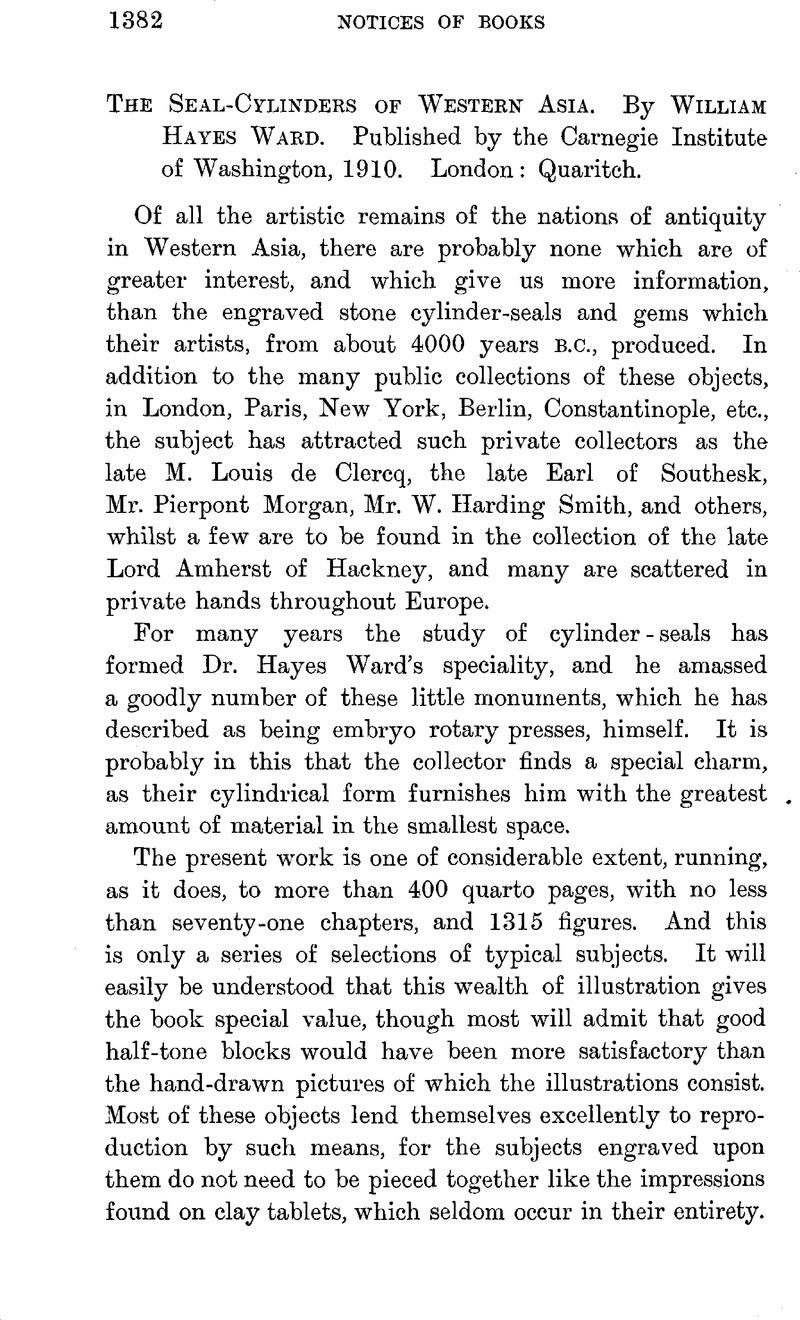Published online by Cambridge University Press: 15 March 2011

page 1383 note 1 It is interesting to note that Dr. Hayes Ward's No. 11 on p. 27, from a tahlet in his own possession, has the same cylinder-seal as in Amherst Tablets, vol. i, pp. 76–8. In Dr. Ward's specimen the design (the ordinary one of the owner of the cylinder led into the presence of his god) is the more perfect, but apparently the inscription of the Amherst example is the better preserved. The text reads: “Dungi, the mighty man, king of Ur, king of the four regions, En-sinibzu, hisservant.” Another, on tablet No. 61 of the Hoffman Collection, referred to in Radau's Early Babylonian History, p. 251, has likewise the design of the owner led into the presence of his god, and the bird with outspread wings in the field above. The inscription, which may be completed from other tablets, is as follows: “Dungi, the mighty man, king of Ur, king of the four regions, Sur-Lama, the judge, his servant.”
page 1384 note 1 See JRAS. for April, 1910, p. 403.